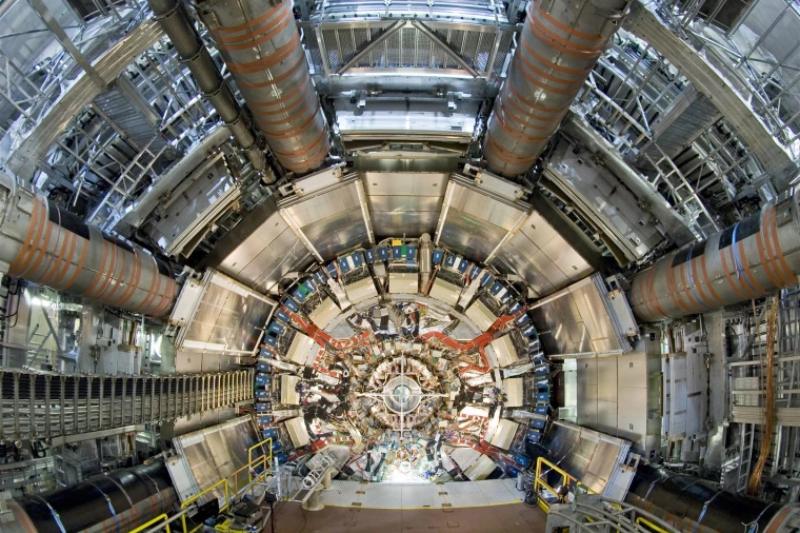CERN will Boost the Most Potent Atom Smasher in the World to Explore New Physics

At the Large Hadron Collider (LHC) at CERN, high energy particles collide to produce rarer, more massive particles, such as the Higgs boson, which was discovered there in 2012. However, there is still a lot to learn about this particle, whose properties make it unique among all other fundamental particles.
The biggest and most powerful accelerator in the world is about to undergo a major overhaul in order to pass more demanding testing. The SLAC National Accelerator Laboratory of the US Department of Energy is going to be very important.
As to SLCA, its theorists and experimentalists will collaborate to develop critical detector components and data analysis tools for an upcoming update of the High-Luminosity-LHC (HL-LHC). The developments are expected to aid in the investigation of the Higgs boson and the study of physics beyond the Standard Model.
Superconducting magnets, which can bend, guide, and accelerate a stream of high-energy particles to almost the speed of light, are used to line the miles-long, pipe-like “tracks” that make up the LHC.
Vital Part in the Improvement of the HL-LHC Detector
To quantify self-coupling for the first time and explore the properties of the Higgs boson, the LHC is being upgraded to the HL-LHC. The HL-LHC will increase the luminosity of the LHC, which is a measure of the number of collisions over time. In addition to the quantity of Higgs bosons, more collisions raise the possibility that unusual particles will also emerge and be picked up by the accelerator’s detectors.
To ensure that data collecting at the HL-LHC begins in 2029, SLAC needs to complete the interior assembly of a critical detector component.
The ATLAS detector will have a difficult time efficiently identifying and differentiating particles produced in the billions of collisions that are predicted to occur at the HL-LHC. The detector struggles to pick out meaningful collisions among the thick concentration of collisions.
Researchers say that SLAC, together with thirteen other national laboratories and institutes, will be responsible for improving the two deepest layers of ATLAS, which are closest to the collisions.
The core of ATLAS will be replaced by the Inner Tracker (ITk), whose minuscule silicon sensors, or pixels, will track the paths of post-collision particles.
“ITk is absolutely crucial to the upgrade and fits exactly within that priority of P5. Whereas most systems being delivered to CERN will be assembled there, SLAC is delivering the whole, fully assembled pixel inner system detector,” said Philippe Grenier, level 2 manager of the ITk upgrade and lead scientist at SLAC, in a statement.
Moreover, the ATLAS group at SLAC has suggested the High Granularity Timing Detector (HGTD), a new subdetector that will give precise timing data to ITk to help prevent pileup problems.
Improving Trigger Systems and Data Analysis
After the HL-LHC is in operation, the SLAC team will help with the analysis of ATLAS data. The current challenge facing researchers is to increase and enhance the application of AI to more efficiently assess data from the HL-LHC. Machine learning algorithms are widely used to extract patterns from detector data.
Even once ATLAS is upgraded, the researchers will need to create sophisticated machine learning algorithms that can minimize pileup interactions in order to reconstruct events with more accuracy.
According to Schwartzman, “the work on improved HL-LHC reconstruction algorithms is synergistic with the detector work and will be key in enabling the full physics potential of the HL-LHC.”
The ATLAS team is also attempting to incorporate AI into other stages of data collection, like the trigger system. The HL-LHC will generate five to seven billion collisions every second.
In order to decide which events to keep and discard, researchers claim that ATLAS’s trigger system quickly but approximately reconstructs the particles produced during these occurrences.
The Technology Innovation Directorate at SLAC and the ATLAS group are working together to figure out how to include ultrafast AI into the trigger hardware.
Michael Kagan, a principal staff scientist at SLAC working on these pattern recognition algorithms, said, “One of the things we’re excited about is putting AI right on these electronics to run at the microsecond or even nanosecond level to help with those pattern recognition algorithms.”
In addition, the team is breaking with precedent by developing fast machine learning techniques for ATLAS’s trigger. The new program detects anomalies in the data, even those that the trigger system ignores, which may reveal physics outside the Standard Model.
Beyond HL-LHC, the method shows promise for handling data flood at facilities like SLAC’s LCLS-II and helping with applications like self-driving cars, according to researchers. The versatility of fast machine learning suggests wider scientific and technological applications beyond high-energy physics studies.